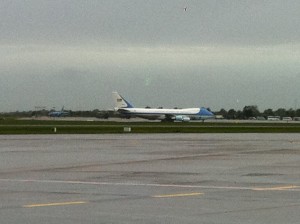The Winds of Dublin
Like a lot of airline pilots, I’m always on the lookout for a good trip to pick up
Like a lot of airline pilots, I’m always on the lookout for a good trip to pick up, either to add to my schedule or trade for a less desirable trip. “Open time” is what we call the list of trips with no current pilot assignment. The list is dynamic, and trips pop up throughout the month when assigned pilots become unavailable for some reason. Maybe they had to bow out due to jury duty or military duty (a lot of airline pilots are also in the Reserve). Maybe someone broke a leg skiing or had some other medical situation.
Looking through the open time list is like panning for gold, and occasionally you hit pay dirt. Who would want to trade a three-day domestic trip, with eight separate flights and worth only 15 hours of pay, for a nice, leisurely three-day trip to Istanbul, with just two flights and 22 hours of pay? Answer: almost everyone. After all, we get paid by the hour, so increasing the ratio of block hours to working days is a priority for most pilots. An Istanbul trip won’t stay on the open time list for even a full day before somebody snags it. It also doesn’t hurt that a trip of this length will have a third pilot on board, so that each pilot can have a rest en route. The flight pay continues during the rest break. (I’ve heard this affectionately referred to as “dozing for dollars.”)
I was recently able to trade a three-day Las Vegas for a three-day Dublin. The trans-Atlantic trip was worth almost four more hours of flight pay, and because it’s been a long time since I’ve been to Dublin, I was happy when my swap request went through. There wouldn’t be a third pilot on this short international trip; only flights with a scheduled block time of over eight hours have that extra pilot (this is gate-to-gate time, not just flight time).
Report time was 7:30 pm for a 9:00 pushback from the gate. That meant I would be flying on the backside of the clock, getting into Dublin around 3 a.m. Eastern time (8 a.m. in Dublin). Sleep management is an important consideration for these flights, especially when there’s no relief pilot on board, so I got to the airport early and took a two-hour nap in a comfortable recliner before report time.
I flew the leg going over, and the trip was uneventful. But it was quite windy in Dublin for the approach. They were calling the winds “two four zero at two four gust three seven.” which meant that the winds were aligned about 40° off the runway heading for runway 28 (which, not coincidentally, is about 280°).
The crosswind component of the wind can be found using simple high school trigonometry: Multiply the wind by the sine of the angle between the winds and the runway heading. In practice, most pilots will make a simple mental estimate or consult a crosswind conversion chart that’s available in our kits. In this case, a gust of 37 knots equates to a crosswind of about 24 knots.
Because of these strong winds, we briefed the possibility of windshear, and reviewed the windshear recovery procedures in case we had to go around. Major fluctuations in airspeed are what we’re looking for, because this can result in a sudden loss of lift, which is unacceptable close to the ground. If we see an instantaneous loss of 20 knots of airspeed, for example, this would be a clear indication of windshear, and we would discontinue the approach. At that point, we’d have to decide whether it’s worth another try or a divert to a more suitable airport. And when I say “another try,” it’s not that we just decide we’re going to cinch our seatbelts and get through the windshear on the second attempt. These conditions change rapidly, and a second approach may not have any problem at all.
Coming down final, with the airspeed back to about 145 kts, our instruments showed the winds at 1,000 feet above the ground to be a little over 50 knots. I glanced down and saw a ground speed of 97 kts at one point, and the gusty winds made it necessary to make constant adjustments in the power. We were seeing only minor fluctuations in airspeed, so it didn’t look like windshear was going to be a concern.
On a crosswind landing, we hold the nose into the wind so that the plane flies down the extended runway centerline. We obviously can’t land with our nose turned to the left, though, so as we get close to the runway, we align the nose with the runway using right rudder and roll in more left aileron so that the plane doesn’t drift downwind (we need to land on the runway!). This is what is meant by “cross controls,” a term you might hear from pilots when talking about a crosswind landing.
Of course, I probably wouldn’t tell you all this if I had made a bad landing; I’m happy to say it was a good one. One of the flight attendants told me, on the way to our layover hotel, that she had been braced for a firm “arrival,” and was pleasantly surprised. (Not sure how I should take that.)
It was windy for the duration of our stay in Dublin, and the next morning the winds were even stronger, gusting to 53 knots! I did the walk-around with one hand on my hat to keep from losing it. After completing my pre-flight of the plane, I turned and saw Air Force One landing. I waved, but I didn’t see anyone wave back.
/https://tf-cmsv2-smithsonianmag-media.s3.amazonaws.com/accounts/headshot/Steve-Satre-headshot.jpg)

/https://tf-cmsv2-smithsonianmag-media.s3.amazonaws.com/accounts/headshot/Steve-Satre-headshot.jpg)